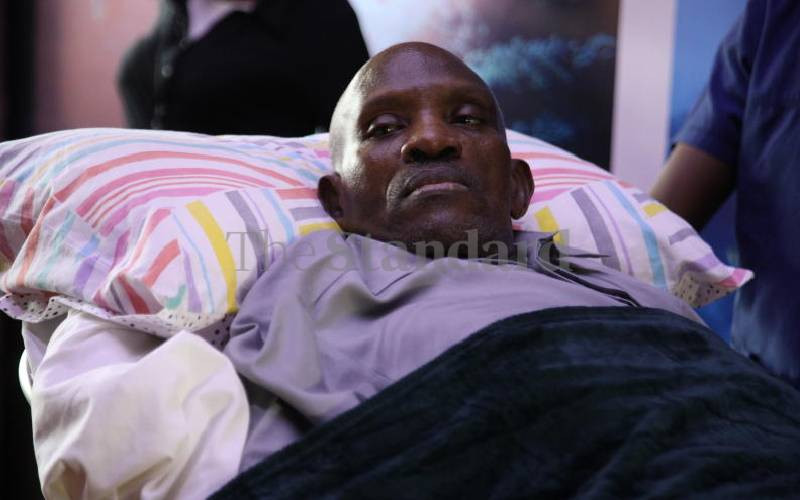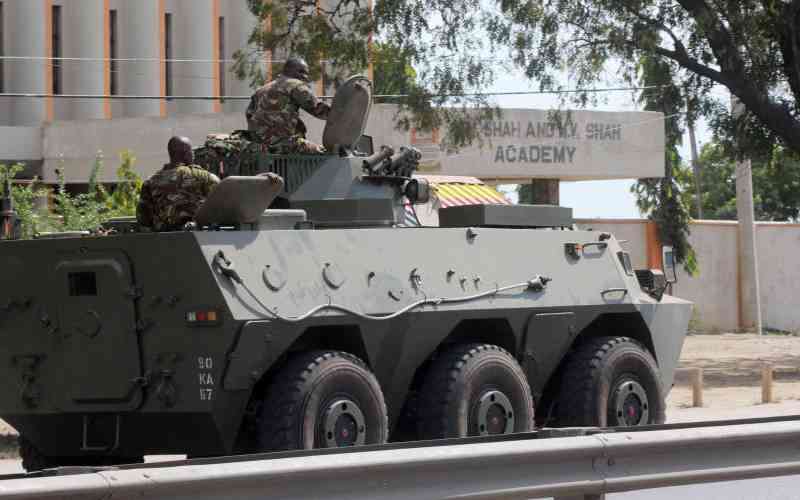By Jacob Ng’etich
The seizure of Kismayu, a key Al Shabaab stronghold, to the African Union forces marks the beginning a tortuous process that began two decades ago to pacify war-ravaged Somalia.
Although forces and experts on conflict are sounding caution that it is too early to celebrate, the fall of Somali to African Union soared hopes around that world that the prospects peace in the Horn of African nation are brighter than at any time since the country descended into chaos in 1991 following the bloody ouster of military dictator Mohammed Siad Barre.
In the wee hours of Friday, the Kenya Defence Forces (KDF) backed by the Somali National Army (SNA) stormed the port city, considered a nerve centre of all Al Shabaab operation in southern Somalia.
In a nerve-racking 60-hour battle that began on Tuesday, some 40kms north of the city, KDF and SNA accomplished what years of negations in neighbouring countries – Kenya, Ethiopia, Djibouti and Uganda – had failed to achieve: ridding Somalia of organised armed gangs.
It is also a culmination of retaliatory strikes Kenya launched against the terror group that had resorted to kidnapping and abduction of western tourists in Kenya, creating insecurity that had began hurting the economy as tourist-source countries sent out travel advisories against the country.
Al Shabaab fiefdom
Thus the joint forces success in Al Shabaab’s fiefdom marks and important stage in the long journey to restore peace and political stability in Somalia.
More significantly, it coincides with first presidential election ever on Somali soil two three weeks ago in which Hassan Mohamud was elected president.
Instability in Somalia dates back to two decades with deposition of Barre his former military adviser and ambassador to India Gen Mohamed Farah Aideed after serving for 21 years. Barre came to power in 1968 through a military coup with the help of neighbouring Ethiopian government.
The ensuing conflict created anarchy and divided the country along clan lines. It not only wreaked economic havoc but also precipitated one of the worst humanitarian crises ever in eastern Africa, triggering human exodus to the rest of the world.
The conflict, according UN Security Council indices, turned Somalia — in particular the capital Mogadishu — into one of the most dangerous places to live in the world. In 2009 it was named the world’s most dangerous country followed by Afghanistan and Iraq came third according to a list of the world’s most dangerous countries put together by a risk assessment group that rated crime, police protection, the risk of terrorism and stability in the world’s nations. As the war raged in Somalia, there have been several interventions efforts by multiple countries to restore stability. Kenya, hosted early peace talks that culminated the election of President Yusuf Abdullahi in 2005 at Kasarani.
Abdullahi’s regime did little to end the conflict as his government was perceived a puppet of the seven-member Inter-Governmental Authority on Development, particularly Kenya. His four-year reign restricted him to small part of the Mogadishu — the area around Villa Somalia, the seat of the government.
The rest of the country was under the control of the Islamic Court Union, which had managed to run the Aideed-backed fighters out of the capital. Kenya is not the first country to invade Somalia. In 2006 the Ethiopian troops invaded Somalia to prop Abduallahi’s fledgling government.
The Ethiopian troops restored some modicum of normalcy in the capital, after Islamic Courts Union (ICU), which agitated for sharia rule. The agenda of ICU was contrary to the peace charter signed in Nairobi in 2005, which among other things declared a federal state founded on secular tenets of governance.
Stay informed. Subscribe to our newsletter
Between 2006 and 2009 when propped the fragile Abduallahi government, Ethiopian troops were widely unpopular with Somalis who viewed them as an occupation force. Prior to the ethiopain expedition, the United States under the umbrella of Operation Restore Hope, that attempted to pacify Somalia militarily, but with calamitous results. The operation ended with the annihilation of American soldiers, who were killed by Aideed’s fighters and their bodies dragged in the streets. It was the greatest embarrassment for the world’s only super power that provided incentives to the warlords to entrench themselves.
A KDF military intelligence currently on the frontline told The standard on Saturday that after a series of international attempts to restore stability in Somalia failed, Kenya made a decision to defend its territory. He divulged that following Ethiopia’s debacle in Somalia Nairobi began gathering intelligence in preparation of an onslaught.
A KFD officer summed up Kenya’s frustrations with half-hearted international attempts to restore peace in Somalia thus: “The Islamist group had increasingly become a nuisance to Kenya and it became imperative that they needed to be fought militarily lest the terrorists pose more danger to the country.”
British tourist
The killing of a British tourist, kidnapping a French female tourist and abduction humanitarian workers from refugee camps in northern Kenya hastened decision to roll tanks into Somalia.
The tourists were attacked at a cottage in Kiunga, Lamu district, and the gangsters took the woman and escaped towards Somalia’s Kismayu she was later freed seven months after her relatives airdropped $1.1 million ransom to her captors.
Even as Kenya planned the military operation, Uganda had already deployed troops in the capital. For two years until late last year, the Uganda and Burundian troops were confined to section Mogadishu. They lacked they capacity and wherewithal to mount massive operation outside the capital.
Initially given six months, Amison was mandated to protect the transitional government structures, implement a national security plan, train Somali security forces and assist in creating a secure environment for the delivery of humanitarian aid.
However, its mandate has been extended and period have been extended twice with the current term ending on 16 January 2013. The expansion of the Amisom mandate to include peace enforcement provided the momentum the force needed to rid Somalia of warlords.
Initially, Amisom was of consists of troops from Malawi, Nigeria, South Africa, Djibouti and Guinea Burundi and Uganda. However, only Uganda and Burundi honoured their promise.
Intense training
Uganda deployed 1,500 troops as early as February 2007 under the command of Maj-Gen Levi Karuhanga. The troops had been training for two years in preparation for the mission.
Early in the year, UNSC boosted the number when it agreed to support the deployment to 17,731 from 12,000. The approval followed a series of successes against al-Shabaab fighters.
Last October KDF and SNA soldiers started a coordinated operation against the Al-Shabaab group of militants in southern Somalia, the mission was officially being led by the Somali army, with the Kenyan forces providing support role. Kenya has deployed 5,000 troops.
 The Standard Group Plc is a
multi-media organization with investments in media platforms spanning newspaper
print operations, television, radio broadcasting, digital and online services. The
Standard Group is recognized as a leading multi-media house in Kenya with a key
influence in matters of national and international interest.
The Standard Group Plc is a
multi-media organization with investments in media platforms spanning newspaper
print operations, television, radio broadcasting, digital and online services. The
Standard Group is recognized as a leading multi-media house in Kenya with a key
influence in matters of national and international interest.
 The Standard Group Plc is a
multi-media organization with investments in media platforms spanning newspaper
print operations, television, radio broadcasting, digital and online services. The
Standard Group is recognized as a leading multi-media house in Kenya with a key
influence in matters of national and international interest.
The Standard Group Plc is a
multi-media organization with investments in media platforms spanning newspaper
print operations, television, radio broadcasting, digital and online services. The
Standard Group is recognized as a leading multi-media house in Kenya with a key
influence in matters of national and international interest.








